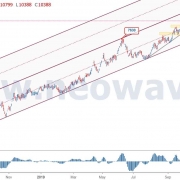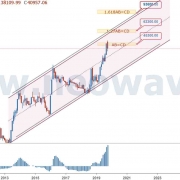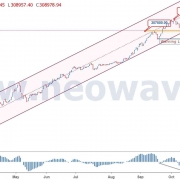(111) New Tips & Hints
Since Triangles occur frequently, but are often misinterpreted, what clues exist (early on) to tell us a Triangle is, or is not, forming?
ANSWER:
Whether a Flat, Zigzag, Triangle, Diametric or Symmetrical is forming can only be determined (well in advance) by employing advanced NEoWave observations which focus on the price, time and complexity development between waves-A and B.
Under NEoWave rules, a Flat or Zigzag is possible only IF wave-B takes the same amount of time or more as wave-A (wave-B will usually consume much more time in Flats than it will in Zigzags). If wave-B takes less time than wave-A, a Triangle, Diametric or Symmetrical is forming.
In all expanding and contracting Triangles, wave-A will be the most violent segment of the formation, even if it is the smallest in price (i.e., it should cover the most price in the least time from high to low, or from low to high). If this rule is not met, a Neutral Triangle is forming OR another non-Triangle pattern is underway.
If wave-B is around 38.2% of wave-A, it must take less time than wave-A to be part of a NEoWave Neutral Triangle. As a result, in any A-B sequence where wave-B is around 38.2% of wave-A in price, but takes MORE time than wave-A, a Zigzag is forming, not a Neutral Triangle. As wave-B approaches 61.8% of the price of wave-A, the time it consumes will increase. As it does, wave-B may equal the time of wave-A, but if it is less, only a Triangle, Diametric or Symmetrical is possible. As wave-B exceeds 61.8% of wave-A, it normally will take more time than wave-A; if it takes less, a Triangle, Diametric or Symmetrical is forming OR the rally you are calling wave-B is just smaller wave-a of larger wave-B.
In general, NEoWave theory tells us that the more SIMILARITY there is in price, time and complexity between adjacent waves of the same pattern, the greater the odds a NEoWave Symmetrical is forming. If time and complexity similarity exists between most of the waves, but not price similarity, a NEoWave Diametric is forming. If complexity is similar throughout, but not time and price, a Triangle is probably forming. If vast time, price and complexity differences exist between three adjacent wave segments, a Zigzag is forming. If vast time and complexity differences exist, but price coverage is about the same among three adjacent waves, a Flat is forming.











دیدگاه خود را ثبت کنید
تمایل دارید در گفتگوها شرکت کنید؟در گفتگو ها شرکت کنید.